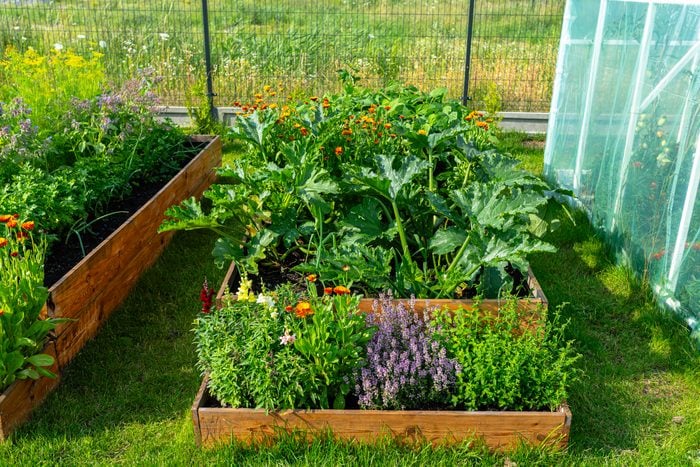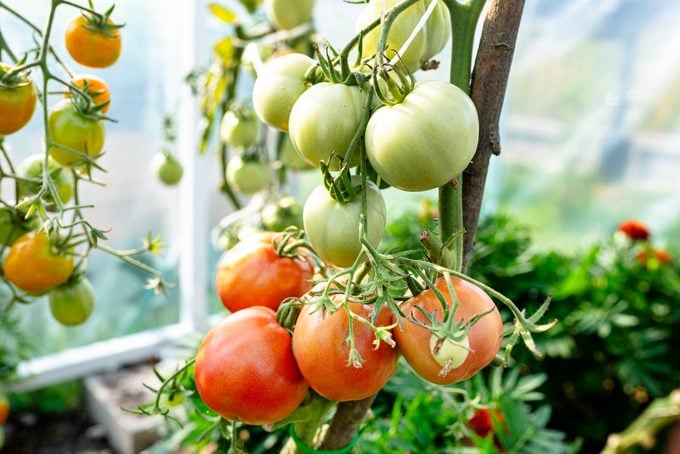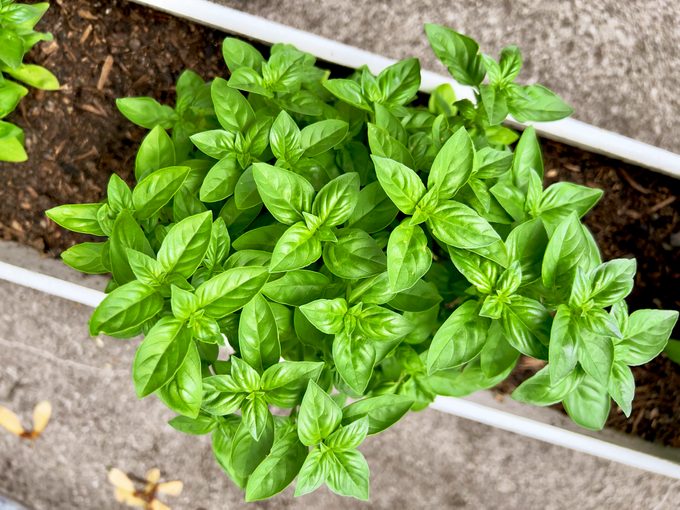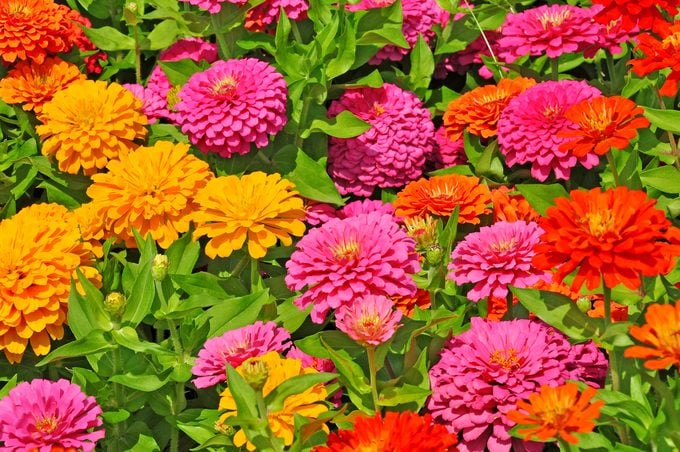Which Plants Should Not Be Grown Next to Each Other in Your Garden?
Updated: Apr. 17, 2024

Learn what vegetable, herb and flower combinations don't pair well so you can create a beautiful and productive garden.
Years ago, when I planted my tomatoes for the season, I noticed tiny sunflowers sprouting in and around the young transplants. It seemed like a beautiful combination, so I left them to grow together.
Unfortunately, by the time the sunflowers bloomed in the early summer, they overshadowed the sun-loving tomatoes. Plus, the seed hulls left behind from the birds affected the surrounding soil. Since then, I’ve learned some plants are best kept apart.
Much of my gardening expertise derives from real life experience, as I adore trying new things in the garden to share with others. When I plan to try something new, I love talking to Marcia Bundi, who for decades has been immersed in plants ranging from greenhouse selections to commercial garlic production. It’s a good day when we can brainstorm the best way to tackle a new project.
Bundi has continued her horticultural education well beyond her university education. She’s constantly researching gardening techniques, including companion planting, and tests these concepts in her own gardens. “Some things work for some, and not for others,” she says.
With her help, we’ll review why some of these plants don’t grow well together, find out what combinations work the best.
On This Page
About the Expert
Marcia Bundi is a Level 3 master gardener and co-owner and horticultural specialist of Bundi Gardens in Great Falls, Montana.
Sources
West Virginia Extension: Companion Planting;
Penn State Extension: Allelopathy in the Home Garden;
University of Florida Gardening Solutions: Allelopathy;
University of Maryland Extension: Blister Beetles on Flowers;
Wisconsin Horticulture Division of Extension: Landscaping in Spite of Black Walnuts;
Researchgate: Allelopathic Potential of Fennel (Foeniculum vulgare);
Santa Barbara Botanic Gardens: Mechanisms of dominance of fennel (Foeniculum vulgare) and native species recovery on Santa Cruz Island, California.
The Ohio State University Extension Clermont County: Potager Article No. 8.
What Makes Plants Incompatible?
In my tomato and sunflower situation, I didn’t consider how much faster the sunflower seedlings would grow and ultimately shade out the tomatoes. Nor did I consider the chemicals within the seed hulls would inhibit the growth of other plants (aka allelopathy). These are two distinct reasons plants do not grow well together.
Other points to consider include whether the water and nutrient requirements of the two plants match, as well as situations when different plants attract the same type of garden pest.
Vegetables Not to Plant Together

While we think of our vegetable garden as one big happy family, there are certain varieties that grow better with a space between them. Once we figure out what plant relationships work the best, life is much easier in the garden.
Kale and cabbage
“Don’t plant kale and cabbage together because they use the same nutrients,” says Bundi. She says it’s not good to plant the same family members of vegetables in the same garden spot year after year. This practice depletes nutrients from the soil.
Potatoes and eggplant
Bundi says to take note of what plants certain pests prefer. In this case, she says not to plant potatoes and eggplants next to each other because potato beetles also eat eggplant blossoms.
Carrots and bush beans
“Carrots have ferny little tops and the broad leaves of bush beans will shade them and the carrots won’t thrive,” says Bundi. Give each plenty of distance so both grow well.
Broccoli and cole crops
Although broccoli is healthy for us to eat, it produces chemicals in its roots to discourage pests, and those chemicals can affect the growth of other cole crops (a general term to describe members in the broccoli family).
Don’t plant broccoli side-by-side with cabbage, kale, cauliflower or Brussels sprouts.
Tomatoes and potatoes
No gardener wants to hear the word “blight,” because a bountiful garden can quickly wither when struck with particular varieties of this fungal disease.
Tomatoes and potatoes are in the same botanical family, making them susceptible to many of the same infections. So give them space between each other.
Onions and beans
Some say onions stunt the growth of bush beans. More accurately, they don’t grow well together because of different watering needs.
While both thrive with ample moisture early in the season, once the onion tops mature and fall over, gardeners typically discontinue additional watering to allow them to cure. Conversely, beans benefit from consistent watering during most of their growing period.
Herbs Not to Plant Together

Most herbs grow well together because they have similar growing requirements, but a few are best kept in separate containers or at least not right next to each other.
Many gardeners consider some herbs, like mint, to be bullies. Other varieties create chemicals that discourage the growth of other plants close to them.
Mint and basil
“You don’t want anything that grows really fast next to one that is slow growing,” says Bundi. One year, I plugged in a few basil plants in what seemed like an open space. Then in mid-summer, chocolate mint took over and smothered my basil.
Fennel and cilantro
Though fennel straddles the fence between vegetable and herb, we’re considering it an herb here. Fennel produces chemicals that inhibit seed germination, so be sure to keep it separate from cilantro and any other plants you start by seed.
Sage and lemon balm
Both these herbs are fragrant on their own and have excellent uses in the kitchen. But lemon balm requires more water, resulting in overwatering of the sage. Keep the sage with other herbs and plants that thrive in dry conditions, like lavender, rosemary and thyme.
Flowers Not to Plant Together

We all know to plant sun-loving flowers together and shade-loving flowers together. But a few other combinations are problematic for other reasons, ranging from their growing habits to what pests prefer to feed upon them.
Black-eyed Susan vine and bachelor buttons
On their own, both these flowers are favorites in the garden. But when planted closely together, the black-eyed Susan vine grabs the stems of the sturdy bachelor buttons and ultimately engulfs them.
Asters and zinnias
Bundi says she has issues with blister beetles attacking aster plants. This makes it wise to keep the species that blister beetles prefer, like asters and zinnias, away from each other.
When you group varieties targeted by a pest, you’re making that pest its own buffet. In this case, the voracious blister beetles can potentially decimate two flower species instead of one.
Daylilies and gladiolus
While daylilies and gladiolus make a beautiful bouquet, both are prone to thrips, a tiny, sucking insect. When grown together in the garden, this small pest problem can ruin these stunning blooms. Give them space so if you notice thrip damage on one of the flowers, it may not affect the other.
Other Plants Not to Plant Together
Roses and hops
Hop plants are a fantastic perennial to grow along a fence because they grow quickly every season. They’re also easy to clean up in the fall or spring, making ready for new growth. But don’t plant roses anywhere near hops, because one hops’ runner can infiltrate a rose bush and grow into it seemingly overnight.
Black walnut trees and anything
Black walnut trees are well-known to greatly impact the soil around them, making the success of any garden planted near them challenging. If there’s a black walnut tree in the landscape, keep your garden at least 50 feet from the tree.
Nasturtiums and eggplants
Flea beetles are a frequent pest in many gardens. During more than one growing season, Bundi says flea beetles targeted her nasturtiums.
Flea beetles jump from plant to plant, so keep nasturtiums away from eggplant, another flea beetle favorite.
FAQs
What is companion planting?
Companion planting is steeped in historical tradition as an informal method taking into consideration the chemical make-up of each plant, along with the growing requirements and pest vulnerabilities. Some gardeners swear by pairing up “friendly” plants that, at least anecdotally, thrive when they’re grown next to each other.
While companion planting isn’t a hard science, understanding why some plants don’t play nicely with others lets us make sound choices when designing and planting a garden.
How far apart should you keep plants that don’t grow well together?
Provide a minimum of three rows between the varieties.
